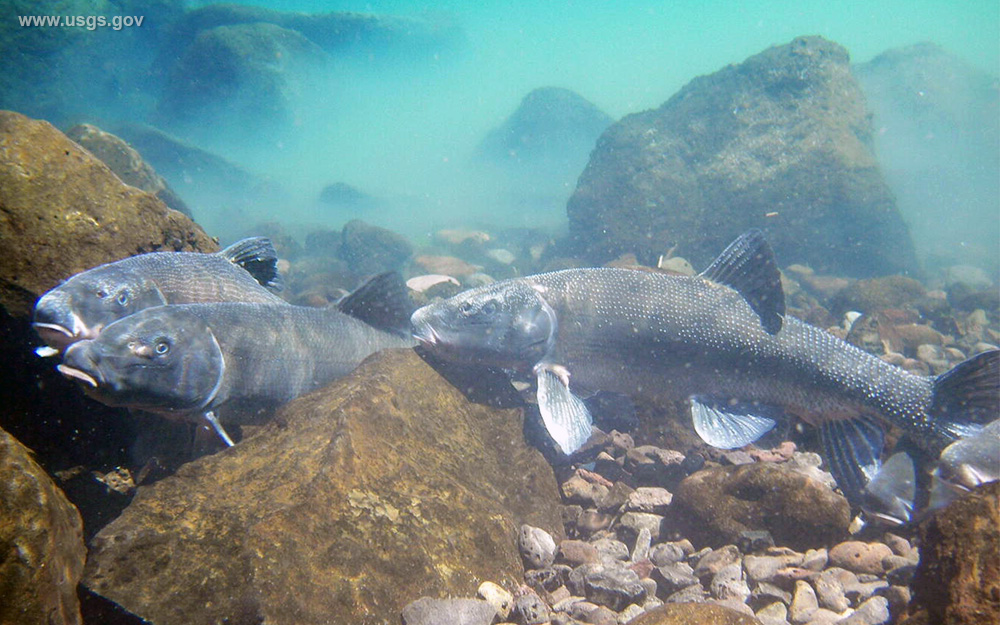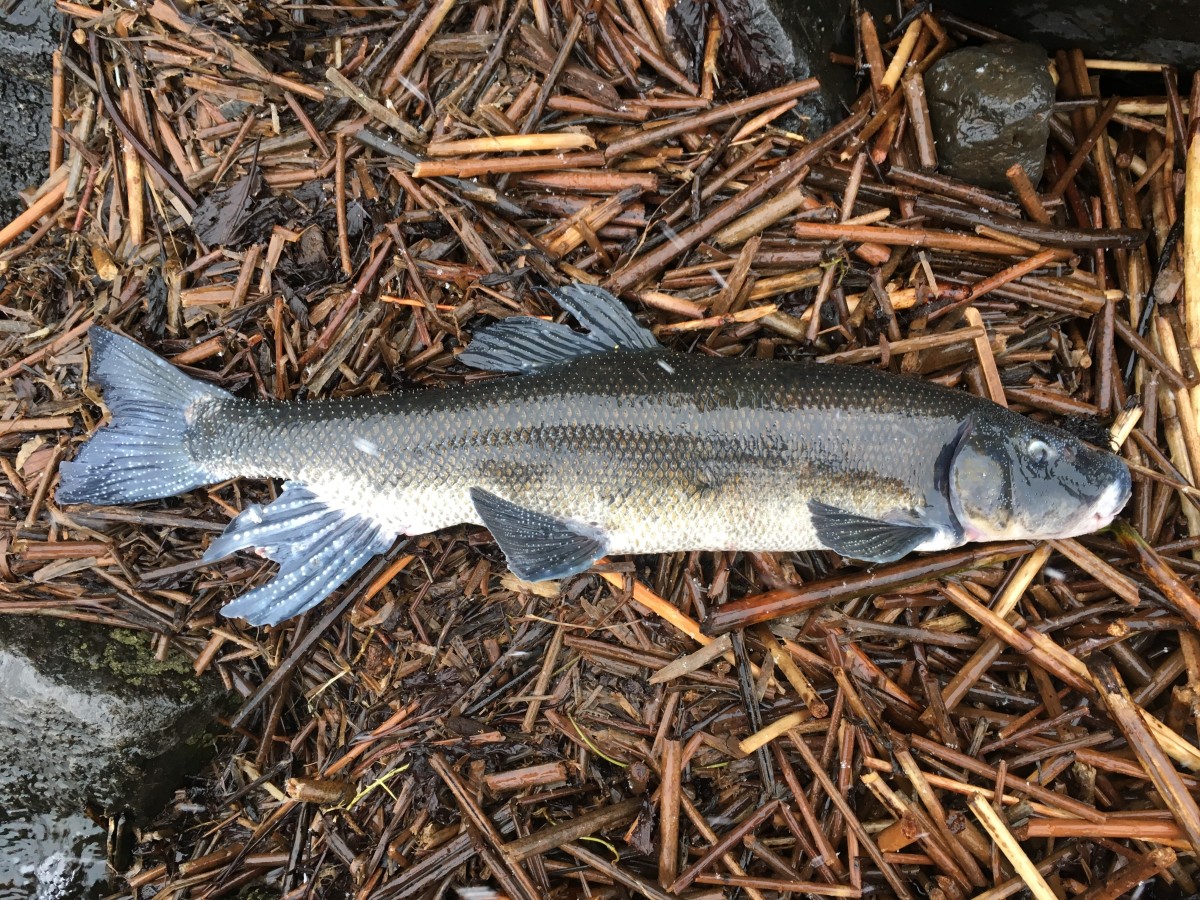Lost River sucker
(Deltistes luxatus)

Classification
General data
The Lost River sucker (Deltistes luxatus) is a species of ray-finned fish in the family Catostomidae. It is the only living member of the genus Deltistes. It is found only in California and Oregon. Its population is much reduced from historical numbers for a number of reasons. It is federally listed as an endangered species of the United States.
This fish is one of the largest suckers, capable of reaching 86 cm (34 in) in length.
It can be identified by its long snout with a small hump on top. It is dark on the back and sides and whitish or yellowish on the belly.
Its lifespan can exceed 40 years. It does not reach sexual maturity until six to 14 years of age, most maturing around age 9.
The sucker prefers deep lakes and pools and fast currents. It goes to the shoreline to obtain food and shelter in the vegetation. It spawns in streams with riffles and substrates of gravel and cobble. Spawning occurs in March, April, and May. The female contains many eggs, up to 235,000, and spawns with several males. The fish spawns several times during its life. The eggs incubate on the stream bottoms for two or three weeks and the larval stage is 40 to 50 days long. The juveniles find shelter in emergent vegetation near the shore.
The sucker eats a variety of animal material, including zooplankton, various other invertebrates, and periphyton.
This fish is endemic to the Upper Klamath Basin straddling the border between southern Oregon and northern California. Its distribution included Upper Klamath Lake, its tributaries, and most of the creeks that drain into it, as well as the Lost River, Tule Lake, Lower Klamath Lake, Sheepy Lake, and Clear Lake.
It was historically abundant in the basin. It was the most common food fish in the area, providing food for the Klamath and Modoc people, as well as local settlers, who also fed it to their livestock. It supported a cannery, which processed it for food and oil.
Today, the fish can be found in Upper Klamath Lake and its tributaries, Clear Lake and its tributaries, Tule Lake, part of the Lost River below the Anderson-Rose Dam, and part of the Klamath River. Its range declined as dams were built, flows were diverted, marshes were dredged and drained, and exotic species were introduced to the area. The landscape changed as it was altered for agriculture, livestock were transported in, trees were taken for timber, and riparian vegetation was cleared. Eutrophication occurred in Upper Klamath Lake, a major cause of the decline of this and other local fish, and a major reason why the sucker is not recovering.












